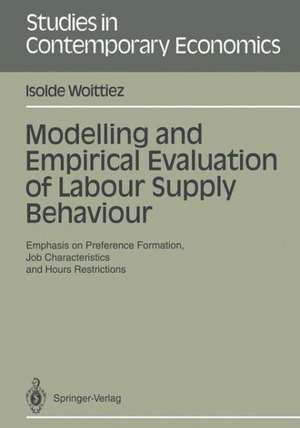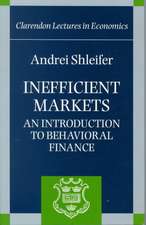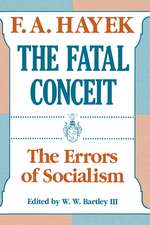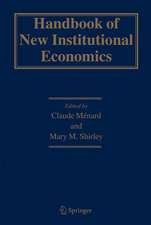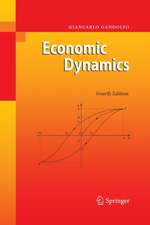Modelling and Empirical Evaluation of Labour Supply Behaviour: Emphasis on Preference Formation, Job Characteristics and Hours Restrictions: Studies in Contemporary Economics
Autor Isolde Woittiezen Limba Engleză Paperback – 26 iun 1991
Din seria Studies in Contemporary Economics
-
 Preț: 309.48 lei
Preț: 309.48 lei -
 Preț: 502.75 lei
Preț: 502.75 lei -
 Preț: 424.81 lei
Preț: 424.81 lei -
 Preț: 490.25 lei
Preț: 490.25 lei - 15%
 Preț: 637.78 lei
Preț: 637.78 lei -
 Preț: 421.72 lei
Preț: 421.72 lei -
 Preț: 501.41 lei
Preț: 501.41 lei -
 Preț: 485.46 lei
Preț: 485.46 lei - 15%
 Preț: 466.13 lei
Preț: 466.13 lei - 15%
 Preț: 647.08 lei
Preț: 647.08 lei - 15%
 Preț: 638.89 lei
Preț: 638.89 lei - 15%
 Preț: 638.89 lei
Preț: 638.89 lei -
 Preț: 490.25 lei
Preț: 490.25 lei -
 Preț: 488.12 lei
Preț: 488.12 lei -
 Preț: 485.24 lei
Preț: 485.24 lei - 15%
 Preț: 441.51 lei
Preț: 441.51 lei -
 Preț: 493.51 lei
Preț: 493.51 lei -
 Preț: 420.20 lei
Preț: 420.20 lei -
 Preț: 383.71 lei
Preț: 383.71 lei - 15%
 Preț: 635.80 lei
Preț: 635.80 lei - 15%
 Preț: 648.42 lei
Preț: 648.42 lei - 15%
 Preț: 644.82 lei
Preț: 644.82 lei -
 Preț: 487.37 lei
Preț: 487.37 lei -
 Preț: 451.26 lei
Preț: 451.26 lei - 15%
 Preț: 635.15 lei
Preț: 635.15 lei - 20%
 Preț: 557.75 lei
Preț: 557.75 lei - 15%
 Preț: 650.04 lei
Preț: 650.04 lei -
 Preț: 493.34 lei
Preț: 493.34 lei - 15%
 Preț: 634.18 lei
Preț: 634.18 lei -
 Preț: 486.60 lei
Preț: 486.60 lei -
 Preț: 495.46 lei
Preț: 495.46 lei -
 Preț: 485.46 lei
Preț: 485.46 lei -
 Preț: 481.58 lei
Preț: 481.58 lei -
 Preț: 485.61 lei
Preț: 485.61 lei -
 Preț: 418.67 lei
Preț: 418.67 lei -
 Preț: 417.90 lei
Preț: 417.90 lei -
 Preț: 492.74 lei
Preț: 492.74 lei -
 Preț: 488.33 lei
Preț: 488.33 lei -
 Preț: 419.21 lei
Preț: 419.21 lei -
 Preț: 483.12 lei
Preț: 483.12 lei -
 Preț: 486.60 lei
Preț: 486.60 lei -
 Preț: 425.42 lei
Preț: 425.42 lei - 15%
 Preț: 638.57 lei
Preț: 638.57 lei - 15%
 Preț: 637.28 lei
Preț: 637.28 lei -
 Preț: 483.70 lei
Preț: 483.70 lei -
 Preț: 414.21 lei
Preț: 414.21 lei -
 Preț: 428.84 lei
Preț: 428.84 lei - 15%
 Preț: 633.19 lei
Preț: 633.19 lei -
 Preț: 478.71 lei
Preț: 478.71 lei - 15%
 Preț: 639.41 lei
Preț: 639.41 lei
Preț: 639.59 lei
Preț vechi: 752.45 lei
-15% Nou
Puncte Express: 959
Preț estimativ în valută:
122.40€ • 127.06$ • 102.06£
122.40€ • 127.06$ • 102.06£
Carte tipărită la comandă
Livrare economică 22 martie-05 aprilie
Preluare comenzi: 021 569.72.76
Specificații
ISBN-13: 9783540540540
ISBN-10: 3540540547
Pagini: 244
Ilustrații: VI, 232 p.
Dimensiuni: 170 x 242 x 13 mm
Greutate: 0.4 kg
Ediția:Softcover reprint of the original 1st ed. 1991
Editura: Springer Berlin, Heidelberg
Colecția Springer
Seria Studies in Contemporary Economics
Locul publicării:Berlin, Heidelberg, Germany
ISBN-10: 3540540547
Pagini: 244
Ilustrații: VI, 232 p.
Dimensiuni: 170 x 242 x 13 mm
Greutate: 0.4 kg
Ediția:Softcover reprint of the original 1st ed. 1991
Editura: Springer Berlin, Heidelberg
Colecția Springer
Seria Studies in Contemporary Economics
Locul publicării:Berlin, Heidelberg, Germany
Public țintă
ResearchCuprins
1. Introduction.- 2 A simple neoclassical model of labour supply.- 2.1 Introduction.- 2.2 The model specification for one-adult households.- 2.3 The model specification for two-adult households.- 2.4 Data.- 2.5 Estimation results.- 2.6 Concluding remarks.- 2A Wage equations.- 2B A reduced form estimation of single male labour supply.- 2C Derivation of the standard errors of elasticities.- 3 The social security and welfare system and institutional constraints.- 3.1 Introduction.- 3.2 A nonconvex budget set.- 3.3 The use of preferred hours.- 3.4 Estimation results.- 3.5 Concluding remarks.- 3A Likelihood contributions.- 4 Preference interdependence and habit formation.- 4.1 Introduction.- 4.2 A labour supply model with preference formation.- 4.3 Estimation results.- 4.4 A factor analytic model of reference groups.- 4.5 The labour supply model reestimated.- 4.6 Conclusion.- 4A Social group means.- 4B Identification.- 4C Stability.- 4D Correlation matrices of indicators.- 5 Job characteristics.- 5.1 Introduction.- 5.2 The model.- 5.3 Empirical results.- 5.4 Conclusion.- 5A Derivation of the reduced form.- 5B The likelihood function.- 6 Hours restrictions.- 6.1 Introduction.- 6.2 The model.- 6.3 Estimation results.- 6.4 Conclusion.- 6A The expression for ejk and the likelihood function.- 7 Comparison of several models.- 7.1 Introduction.- 7.2 Two-sample tests.- 7.3 ?2 diagnostic tests.- 7.4 Concluding remarks.- 7A Partitioning of the endogenous variable.- 8 Conclusion.- References.
